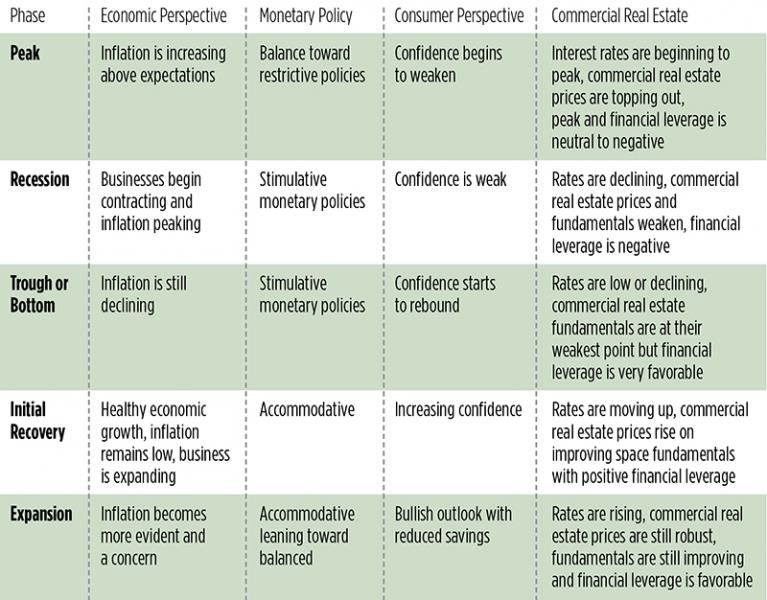I really get a kick out of self-appointed “economists” with a flare for the dramatic, who come out with dire exhortations in the media to garner attention. There are many talented and colorful people who receive media coverage because of their ability to elicit strong emotional responses. More likely than not, they are “talking their book,”—that is, deliberately supporting their strategy by encouraging the mass investor to follow their trades, investments or positions. Sadly, fear sells because it is the strongest human impulse. There is nothing that attracts more attention then yelling “fire” in a crowded theatre or “sell everything” in the investment world.
The “sell everything” mentality resonates deeply in the amygdala, the part of the brain that produces the panic response. Get out and save yourself while you can! Lately I’ve heard quite a lot of talk about how it’s time to get out of the market and that asset prices are over-inflated and the cost of capital too cheap (the root of asset inflation). Indeed, asset prices are historically expensive, the cost of debt, as well as equity, is historically cheap. Expensive assets are never the cause of a recession, but a symptom of excess capital and too few places to invest in corporate growth avenues. While many say we are headed towards another recession and they are right—no one knows just when,—I don’t see an epic crash ahead as I don’t see any major factors that would cause such a crash. The issues that we have today, such as high government debt, large deficits (budget and current account), slow wage growth, low consumer spending and flat corporate profits, have been around for a while and are baked-in to the market.
Real estate investing is a long-term proposition. One does not usually do well by rapidly coming in and out of the market, as a market timer investor would. The best real estate investments are those underpinned by strong fundamentals matched by an investor’s long-term investment horizon. This means that the investor must take a long view, spanning economic cycles. That does not suggest, however, that it is ever wise to pay record high prices at the top of the cycle. It does mean we should be prudently investing for the long-term. Case in point is a well known real estate firm with a justified reputation as excellent investors purchasing one of the largest hotel chains in the world at a very aggressive price in 2007—the very top of the last cycle. Needless to say, hotel is a high beta sector and is the most sensitive to economic downturns, usually doing poorly in downturns. In the case of the Great Recession, hotels had three very tough years. While some investors may have panicked and sold, this particular one did not and was patient and held on through the recession and well into the massive hotel boom we have been experiencing since 2011. They sold the hotel chain for a record profit because they were patient and had a long-term view and conviction about the hotel sector.
Just where we are in the cycle is top of mind for most of us in real estate. We lie awake at night visualizing cycle/market time clocks in our mind. We are constantly obsessing and asking: where are we in the cycle? I haven’t been to a conference in the last year where this question wasn’t posed at least once as a topic of discussion. Before I posit my own opinion, it is useful to touch on business and real estate cycles—why they occur and what are the underlying factors causing them.

Business cycles are an intrinsic part of capitalism. The business cycle or economic cycle is expansion or contraction of the GDP. The business cycle in this country (at least since World War II) typically lasts between seven and 10 years and starts with a boom and ends with a bust. The business cycle has four stages: peak, contraction, trough and expansion.
During the expansion phase, the economy experiences relatively rapid growth, interest rates tend to be low, production increases and inflationary pressures build. The peak of a cycle is reached when growth reaches its maximum output. Peak growth typically creates some imbalances in the economy that need to be corrected. This correction occurs through a period of contraction when growth slows, employment falls and prices stagnate. The trough of the cycle is reached when the economy hits a low point in growth from which economy can begin to expand again. The real estate market is a derivative of the overall economy with a lag. The real estate cycle (private, non-listed real estate) typically lags the general economy by six months to 18 months, depending on the real estate sector and geographic location.
As for a real estate market peak, the market reaches its long-term occupancy average when rental growth is equal to inflation and demand growth increases, creating a need for additional space. Due to the tight supply, rapid rent growth (sometimes called “rent spikes”) can occur. Eventually rents rise high enough, and the market reaches the key point where new construction is cost- feasible. As long as demand grows higher than supply, vacancy rates continue to fall and the expansion continues. Eventually, rent growth accelerates faster and faster, and the market reaches another key point. Real estate begins to be priced at its current value plus a premium in anticipation of what it will be worth in the future. Prices and rent growth accelerate further. At some point, supply typically catches up with demand. This key point is called equilibrium, and marks the end of the expansion phase.
Unfortunately, since occupancy rates are at their highest possible levels, most real estate participants don’t recognize when this occurs. Typically, during this phase, the supply of new construction continues to come in, while demand falls. This causes occupancy rates to fall, and rental growth to slow. Different suppliers of new construction begin to compete heavily for tenants. Eventually, market participants recognize the downturn and commitments to new construction slow or stop. If new construction continues to come in faster than demand and occupancy drops below its long-term average, then the market falls into contraction. In this phase, oversupply, along with negative demand growth, cause rents to be lowered and losses to occur.
Recovery starts on the heels of oversupply of inventory from previous new construction and/or negative demand growth. Recovery begins at the key bottom point of the cycle. This occurs when the excess construction from the previous cycle finally abates and there is net absorption. Demand growth slowly absorbs the existing oversupply, while new construction is non-existent or very low. Over time, vacancy rates fall, allowing rental rates to stabilize and even start to increase. As recovery continues, landlords can increase rates at a slow pace (at or below inflation). Often, the Federal Reserve assists by decreasing interest rates to stimulate the economy, which also makes real estate investment returns more profitable.
I have found, over the years, when people begin to say things like “this time is different” or worse, “we have seen the end of business cycles,” that the end is in fact near. No one likes to think about the end of an expansionary cycle. However, the cyclicality of the economy and real estate is inevitable.
I have said that since the recovery from the last recession was so protracted and growth so slow and, for the most part, rather anemic—nowhere approaching a boom—we may very well see a longer period of continued, if not tepid, growth. The last recession officially ended in June of 2009. However, most businesses and households continued to spend and invest as if the recession were still going on until 2012. Thus, if we were to extrapolate from our average of a seven to 10 year cycle, the next recession might not occur until 2019 to 2022. Of course, the economy could be pushed into a recession by an exogenous shock or unforeseen event before that.
So where are we now? We are in a very unusual situation in that the normal pattern of oversupply has not occurred in this real estate recovery. This bodes very well for the real estate market. Over-supply has always killed the real estate party in the past. In this cycle, however, because of the GFC, the devastating impact on banks, as well as Dodd-Frank regulations, lenders have been reluctant to lend on real estate, dramatically lowering supply through the cycle. Many banks got out of the business completely. The banks and financial institutions that stayed in the business became much more stringent in terms of their lending standards. Lending standards have remained fairly strict until the current time, meaning far fewer new projects have been financed and built. Moreover, many developers and some investors went out of business in the recession or became much more conservative in the recovery. As a result, there is no oversupply and not even a threat of oversupply.
We are at a fraction of low-term supply levels in every real estate sector, except for multifamily. It will take many years at the existing and projected supply rates to attain long-term supply levels for all sectors save multifamily. This means that existing buildings have maintained and extended their pricing power, and throughout the expansion until the current time, we have seen increasing occupancies, rents and capital values. When the real estate downturn occurs, it is likely to be due to lack of demand, not oversupply. Given the economy has been in slow recovery mode and the real estate market has not been sowing the seeds of its own destruction, we could very well see another three to five more years in this cycle.
Dr. David Lynn is the CEO and Chairman of Everest Medical Core Properties (EMCP), a private equity firm and a private non-traded REIT.

